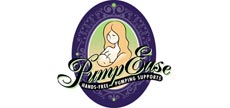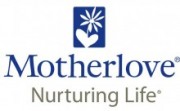By Bettina. Posted on July 3, 2010
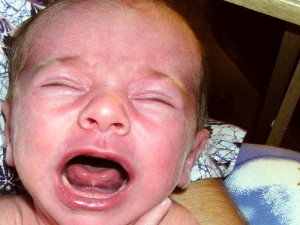
A miserable, tongue-tied baby, courtesy of flickr.com
Kudos to the researchers at the University of Florida for drawing attention to a major “Booby Trap” in helping mothers achieve their personal breastfeeding goal, as published online in Pediatrics. Many in the breastfeeding community have known for a long time that an unusually short frenulum, the connective tissue under the tongue, is more common than people realize and can be easily and quickly snipped by credentialed professionals to allow the baby’s tongue to move properly and milk the breast. If left undiagnosed and untreated, this condition, commonly called “tongue-tie,” can in severe cases result in low weight gain with a great deal of frustration and suffering for the baby, and extreme nipple pain, mastitis and frustration and agony for the mother. Contrary to popular belief, not all doctors are permitted to perform this procedure, so it is important to find one that is (see bottom section).
Says Neonatologist Sandra Sullivan, MD in an article from Futurity.org:
“It is called a frenotomy, and it is far simpler than a circumcision, which we do fairly routinely . . . It literally takes longer to fill out the consent form for the procedure than to do the actual procedure itself.”
The tongue motions required to breastfeed are more complex than those required to drink from a bottle (hence the benefits to the baby’s jaw & speech development). Sullivan explains:
“If you take a bottle with an artificial nipple, there is not a lot a baby has to do to get milk.”
“To get milk out of the breast, they have to make a vacuum and if they cannot get their tongue to the roof of their mouth, they cannot do this. They also need to use their jaw and tongue to move the milk along through the milk ducts in the breast.
“If they just bite on the nipple (like a bottle), first, it hurts (the baby’s mother) a lot and second, it blocks off all those little tubes, which keeps the milk stuck in the breast.”
Isabella Knox, associate professor of pediatrics at the University of Washington says that 4 million babies are born each year, so 40,000 to 100,000 babies are affected by the condition.
“That’s a lot of babies,” Knox says. “I don’t think general pediatrics training gives us a lot of skills in supporting breastfeeding . . . we don’t really know how to help somebody and for some people it is not always a priority.”
According to Futurity.org, “Sullivan is part of an international organization focused on issues related to tongue ties. She and other members of the group’s screening committee are working to develop a screening tool that would help nurses quickly screen for a tongue tie while assessing the baby after birth.”
“There is not a lot of literature about frenotomy, and there are still a lot of doctors who say, ‘Is this really necessary?’” Sullivan says.
“Whether or not there is an epidemic or whether we ignored tongue ties and are looking for them now, this is something that is coming up more often in nurseries.”
Danielle Rigg, CLC & Co-Founder of Best for Babes, who experienced tongue-tie with her second child says that “doctors and health care professionals are not only unaware of ankyloglossia or tongue-tie, they often confuse “frenotomy,” which is a very simple, relatively painless and easy to perform procedure for newborns, with “frenectomy,” or “frenuloplasty” a more involved procedure used to free the frenulum in older children and adults who have shown signs of speech and mechanical pathology. Because of this confusion, it can be hard to find a doctor or health care professional who will perform it. The other problem, according to Jenny Thomas, MD, IBCLC is that contrary to popular belief, not all doctors (like herself) are allowed to perform the procedure, even if they recognize it and want to fix it. ”Most area hospitals, clinics and malpractice carriers consider this MORE than a minor office procedure and classify it validly as a surgical procedure, albeit a quick one. That means, for those places, you need surgical credentials (proving you’ve been mentored and have done enough procedures to not get sued). You then get surgical privileges in your institution and then subsequently need increased malpractice insurance,” explains Dr. Thomas. From what we understand from Dr. Thomas, some hospitals have an ENT (ear, nose & throat doctor) on staff who is educated about tongue-tie and performs all needed procedures, and paying increased premiums so all doctors can perform them isn’t necessary. (And then there is a whole debate about whether doctors are over-performing the procedure to make money.) However, from what we’re hearing from moms, there are plenty of hospitals that don’t have a credentialed doctor performing the procedure, and at those hospitals, moms are up a creek. To make it worse, some lactation consultants (even IBCLCs) are not experienced in recognizing the condition either, so it’s easily missed. (On the other hand, we’ve heard of lactation consultants who have, in a pinch, used a sterilized fingernail to slice the frenulum).
Purchased from Dreamstime.com
Danielle had to track down an oral surgeon, the only one in her area (at that time Montclair, New Jersey) who was willing to do it. “I went straight from the hospital, and although my daughter was less than two days old, she had already learned painful latching habits and I was already bleeding. The procedure took less than a minute, there was no blood, my daughter didn’t even cry,” says Danielle. ”When I tried to thank the surgeon, Dr. Richard Riva of Chatham, New Jersey, he said ”you go nurse that baby, tell me how it feels, and then thank me’. It immediately felt much better, though as a CLC I knew I would have to work with my daughter to help her re-learn a proper latch before all the pain would go away. When I expressed my gratitude to Dr. Riva, here were his words of wisdom:
”Every child deserves to have the pleasure of breastfeeding successfully, and every child deserves the pleasure of licking an ice-cream cone, both of which are aided by this procedure.”
We’d like to add, that every mom deserves to have a positive breastfeeding experience without the trauma of severe nipple pain caused by this condition and other undiagnosed but easily solved breastfeeding issues. Danielle should not have had to leap through the extra hoop of finding an oral surgeon outside of the hospital. Best for Babes hopes that the American Academy of Pediatrics will push for every hospital to have a credentialed doctor who can perform the procedure, education on diagnosis as a requirement in the core pediatrics curriculum in medical school, and that the nurses associations will do the same. While they’re at it, they should require doctors to complete at least a week-long training similar to what the Healthy Children Project offers to train certified lactation counselors, and/or work with the Academy of Breastfeeding Medicine to develop a curriculum. Luckily, pediatricians who are already Fellows of the Academy of Breastfeeding Medicine (look for FABM after their initials, similar to FAAP for Fellow of the American Academy of Pediatrics, and FACOG for Fellow of the American College of Obstetrics & Gynecology) are educated in all things breastfeeding. We’re sure our friend and supporter Dr. Ruth Lawrence, Chair of the American Academy of Pediatrics Breastfeeding Section, has been working on this for years.
What can parents do
1. Get a second opinion. If you suspect your baby has tongue-tie while still in the hospital, ask if there is an ear nose or throat doctor (ENT) on staff who is trained in diagnosing tongue-tie and performing frenotomies. You may want to get the opinion of a highly recommended IBCLC (you made need to bring someone in from outside the hospital). Tongue-tie is not a black and white issue and some will see a problem where others have missed it. If you can’t get help from within the hospital, see an ENT in private practice, an oral surgeon, or a dentist.
Read the stories here of moms who have navigated this booby trap.
Earth Mama Angel Baby is a proud sponsor of Best for Babes
2. Politely and diplomatically educate your pediatrician, and other health care professionals and encourage him/her to be part of the solution. Many doctors don’t know about breastfeeding issues because they weren’t trained, but when enrolled instead of attacked, can be powerful advocates for change.
3. Spread the word to moms. Share this page with any expecting or new mothers. If we can prevent even one mother and baby from suffering through this unnecessarily, we will be ecstatic!!
4. Be gentle to mothers who couldn’t breastfeed. There are a lot of mothers out there whose babies were not diagnosed with tongue-tie, suffered miserably, thought they couldn’t produce enough milk, and agonized over their baby’s lack of sufficient weight-gain, blaming themselves or their babies, and quit breastfeeding long before they intended to. We never judge a mother who quit breastfeeding as “not being committed” because we can not truly stand in her shoes, and most of the time she has been booby-trapped and didn’t know it.
5. Write to the American Academy of Pediatrics, send them a link to this post, and send a copy of your letter to any media contacts, urging them to remove this booby trap.
6. Be the change. For the last few decades, the focus has been on supplementing babies with formula instead of fixing the problem. This is going to take work to change, as the formula companies conduct training for health care professionals that teach them how to prey on the fears of mothers that they won’t make enough milk, and will need to supplement with formula, instead of giving them proper medical care. Sad but true. Through mainstream marketing and educational efforts like this blog, our WHO-Code compliant advertising campaign, celebrity interviews, and popular media coverage, we are reaching millions of parents with the information they need to make informed feeding decisions, and achieve their personal breastfeeding goals. Help us or donate!
7/3 This post was edited to clarify that not all doctors are allowed to snip frenulums.
7/4 Great comment from our Facebook discussion:
“My son has a tongue tie we didn’t find out about it till he was 10, after years of speech classes at school. That plus nipple confusion caused us much stress trying to nurse and we gave up a lot sooner than we wanted to.”
We can’t help but wonder, how many children and adults have suffered from preventable speech problems because we live in a bottle-feeding culture? It should be added to the
next study on potential cost savings. If more babies were diagnosed with tongue-tie properly, not only would moms who want to breastfeed have a better chance of succeeding, but some speech pathology in formula-fed babies could be prevented. It could save parents and children much worry, distress, poor performance in school, teasing from friends, etc.
So not diagnosing and treating tongue-tie is a booby-trap for breastfeeding AND formula feeding parents!
Have you experienced this “Booby Trap”? Have you had any success with educating your doctor or health care professionals? Let’s hear it!
By Bettina. Posted on April 27, 2010
Last week CBSNews.com ran a wonderful video on the Challenges of Breastfeeding, and we issued a challenge to our readers to send 100 letters to CBSNews.com thanking them for “getting breastfeeding right.” (If you haven’t yet, please send an e-mail to CBSNews.com using this link telling them you loved the video and want to see more, especially on how to Beat the Booby Booby Traps! All moms deserve to achieve their personal goals without being undermined, whether they decide to breastfeed for 2 weeks, 2 months or 2 years, or not at all.)
We got a letter from CBSNews.com Health Senior Producer Mike Wuebben thanking us for our letters and our blog post, and Dr. Jen Ashton blogged about it and invites your feedback and ideas, proving that positive recognition is an effective, complementary strategy for advocacy work in changing our breastfeeding culture. Mike Wuebben also shared that his wife had breastfed all three of their children, including one under very difficult circumstances. We asked him to share his family’s story.
That my wife would breastfeed our second son, Willem, was a no-brainer. Leslie nursed our son Benjamin for his first 14 months and except for a rough couple early days, it came very naturally.
In the delivery room at 10 in the morning, just a few minutes after Will was born, Leslie put him to her breast, but this groggy little kid wouldn’t latch on. Oh well. The nurses said he was tired and this was normal. After a half an hour she tried again. No latch. With a beautiful calm focus, Leslie tried again and again. Twelve hours later the nurses came and took the baby away for the night.
Bright and early the next morning they were at it again with no success. Nurses, the midwives, the lactation consultant all gave tips but nothing would work. About this time they were noticing other odd things about my son — Will was “floppy,” low muscle tone, had a funny cry, didn’t blink when tapped on the forehead. By the next day the staff looks of concern had turned to pity. We were told before leaving for home, there was something “not normal” about my son.
Leslie was pumping and using the Haberman feeder- a special bottle for babies with feeding problems. He would eat but still couldn’t suck. We saw specialists, therapists, neurologists, chiropractors and no one knew why he was unresponsive. It was possible, we were told, he could “snap out of it.” Or he might not.
My wife never gave up trying to nurse him and for weeks she would put him to the breast before resorting to the feeder.
Around this time we discovered online a rare disorder that might fit Willem’s symptoms- low muscle tone, inability to blink, suck, move the muscles of his face. It’s called Moebius Syndrome. The article was titled “Kids Born without a Smile.” I had hoped for that “snap” moment when he would become a normal baby and here I was reading about my son’s future with a lifelong disability. Then I read further and saw a golden lining: most kids with Moebius have normal brain function and normal life expectancy.
Finally we knew something. He couldn’t suck because he couldn’t move the muscles of his face. He didn’t react because his muscles were weak and he couldn’t blink.
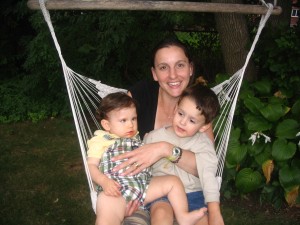
And then the miracles started to happen. One day, my wife went to nurse him and he sucked. She held his little lips together and he managed to get something. He could do it. As long as he could have something to latch onto deep in his mouth he could use his swallow response to pull the milk out. As those muscles grew stronger we started to see tiny twitches in his cheeks. The few muscles he had in his face were starting to work.
Willem continued to nurse well after his first birthday without the use of feeders and other aids. Though late, he continued to hit milestones. At 15 months he started to talk. At 30 months he walked. He learned to drink through a straw (no small feat for someone who can’t close his lips).
I was mostly a bystander to all this. I got to watch the incredible power of a mother’s love for her baby. Leslie was determined to give Willem the same early childhood experience that came so easy to his older brother and millions of other children. I hope her story inspires other mothers who face difficulties nursing.
Willem turns five this summer and he’ll start kindergarten in the fall. He still receives a full regimen of therapies to work on his muscle tone and speech, but he’s a happy, healthy, funny little boy. And I’ve discovered that the doctor at the hospital was right, my son is not normal, he’s extraordinary.
Any other moms or Lactation Consultants out there who have experience with helping babies with Moebius Syndrome breastfeed, we’d love to hear from you! Please share your tips, links and resources!
By Bettina. Posted on December 17, 2009
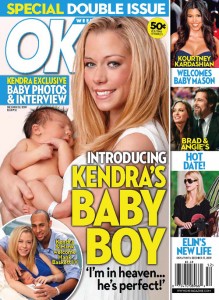 Reality TV star and former Playboy model Kendra Wilkinson is successfully breastfeeding, despite her initial fears. (You may remember that US magazine reported that both Kendra Wilkinson and Kourtney Kardashian were concerned they would not be able to nurse their babies because of breast implants received at a young age.) While the full story in the December 17 issue of OK! magazine does not mention breastfeeding (and states that husband Hank gave baby the first feed), we’ve been told by a spokesperson that Ms. Wilkinson started breastfeeding on the second day and is very happy to be nursing her baby.
Reality TV star and former Playboy model Kendra Wilkinson is successfully breastfeeding, despite her initial fears. (You may remember that US magazine reported that both Kendra Wilkinson and Kourtney Kardashian were concerned they would not be able to nurse their babies because of breast implants received at a young age.) While the full story in the December 17 issue of OK! magazine does not mention breastfeeding (and states that husband Hank gave baby the first feed), we’ve been told by a spokesperson that Ms. Wilkinson started breastfeeding on the second day and is very happy to be nursing her baby.
Ms. Wilkinson got quite a bit of publicity for sharing about her fears. We wrote about it, offered some breastfeeding advice and a shopping list, and extended our cheers to Wilkinson, Kourtney Kardashian and US magazine for helping to change the public perception of breastfeeding and making it more mainstream. Soon after, we noticed an increase in the number of articles talking about implants and breastfeeding, which is wonderful! More surgeons who are performing breast augmentation and reduction surgeries need to know about procedures that preserve the milk ducts, and it should be standard protocol to discuss those options with patients in their childbearing years. More mothers who are planning to breastfeed deserve access to evidence-based information about breastfeeding with implants so they can prepare and plan accordingly.
Congratulations to Ms. Wilkinson for overcoming one of the earliest “booby-traps”-fear of breastfeeding due to misinformation. On behalf of all the moms and babies we serve, we thank her for raising awareness of this important health issue. Celebrities who share their personal breastfeeding stories, like Kelly Rutherford and Gabrielle Reece, help us cheer on, coach and celebrate moms to achieve their personal breastfeeding goals without pressure, judgment and guilt, and to get evidence-based and inspiring information into the hands of more moms. This is an exciting and wonderful time in a new mother’s life and we want all mothers who decide to breastfeed to have a positive breastfeeding experience!
By Bettina. Posted on October 13, 2009
Last Tuesday (October 6th) I attended the Big City Moms‘ Biggest Baby Shower Ever, held at the American Girl Place in New York City. It was an awesome event and the line to get in went down the block. All three floors were chock full of vendors, delicious treats, and fabulous moms-to-be chatting, checking out the goods, and asking questions about baby car, safety and sleep habits.
Seminars on a variety of topics were held on the first floor every twenty minutes or so. I thought Big City Moms did a great job addressing subjects that moms are interested in; including sleep, feeding, and safety. As fun as it is to shop and prepare the nursury it is so important the new mothers have the information they need to make healthy decisions!
The first seminar that I did not want to miss was Dr. Alan Greene speaking about “Feeding Baby Green: Teaching Your Baby to Love Healthy Foods.” Boy is this guy excited about babies eating!! He talked about how babies’ tastebuds are actually most sensitive in utero, and that they practice swallowing before they are born, drinking up to 3 cups of amniotic fluid per day! Dr. Greene explained that not all nutrients pass through the umbilical cord, and that the baby is actually bonding with and getting to know his mother. I really appreciated his non-judgmental style of speaking that addressed the concerns of mothers who were planning to breastfeed as well as those who were not. He talked about “imprinting” and how babies who are breastfed get thousands of different flavors from mothers’ milk, exposing their tastebuds early on, and suggested that formula feeding moms switch brands a few times to change things up. Dr. Greene doesn’t go for a lot of the standard feeding advice given by many pediatricians, especially as far as allergies and feeding schedules, and he explains why in his book, which was included in the gift bags. I found his lecture to be super interesting and informative and well, really intuitive! As a mom I always wondered why introducing solids had to be this highly controlled experiment, when really, babies have been reaching out of the sling for millenia to grab a bit of what’s going into mama’s mouth.
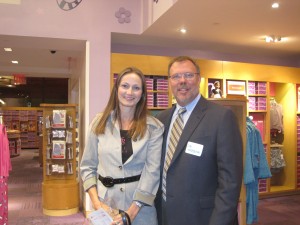
Me and Dr. Alan Greene at the Big City Moms Event
I was fortunate to get a chance to speak with Dr. Greene before his talk . . . I knew about his great work with Healthy Child, Healthy World and was excited to meet him. I told him about what Best for Babes was doing and right off the bat he bubbled over with enthusiasm and fired off some recent breastfeeding research studies. It was clear that he is very pro-breastfeeding and very knowledgeable about lactation science. I told him I thought it was great that the Born Free bottles were BPA-free and hoped that the company would become WHO Code Compliant. Dr. Greene shared that his wife is a breast cancer survivor (like my business partner, Danielle Rigg), and we talked about how strange it was that the big breast cancer organizations didn’t jump with joy over a recent study showing that women with a family history of breast cancer can reduce their risk by 60% — yes, 60% — if they breastfeed their babies. We see eye to eye on a number of things and I was thrilled to meet him.
Kelly Rutherford & Me (Bettina Forbes, Co-Founder, Best for Babes)
The last seminar of the evening was actress Kelly Rutherford speaking about “Socially Conscious Mothering.” She is incredibly down to earth and warm and spent most of the time answering questions from the floor. She has a very nurturing style and made me feel like we’re all in this together, trying to do our best as parents, picking ourselves and each other up when we fall. She talked about some of the personal decisions she had made, including tandem nursing (see our interview with her) and her choice not to vaccinate. I appreciated that she was very open as a mother who is trying to parent in a socially conscious way, and shared her own experience. I think she is an awesome role model and all the expecting moms really enjoyed talking to her. Best for Babes is very lucky to have her as a Champion for Moms!
All in all it was a great evening and a great resource for moms-to-be. Everyone left with a huge gift bag filled with gorgeous items, and better prepared for motherhood!
By Bettina. Posted on August 27, 2009
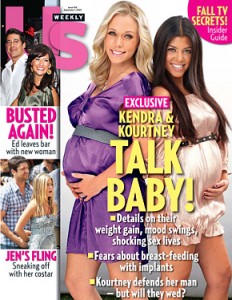 In an exclusive interview, Us Magazine announces that reality stars Kourtney Kardashian and Kendra Wilkinson still want to breastfeed, despite implants! Here from the joint interview:
In an exclusive interview, Us Magazine announces that reality stars Kourtney Kardashian and Kendra Wilkinson still want to breastfeed, despite implants! Here from the joint interview:
“I was so scared that I wasn’t going to be able to nurse that when I saw stuff come out of my nipples the other day, I was like, I can breast-feed?” Wilkinson, 24, tells Us Weekly in an exclusive joint interview with Kardashian, 30. ” And I asked my doctor, who said, ‘That’s fine, but it’s not milk yet!’”
Adds Kardashian (who, like Wilkinson, is also due in December), “They say usually you can [breast-feed with implants]. I want to.”
First of all, hurray for Us Magazine covering a hot topic and drawing attention to an issue that so many moms have questions about, and kudos to Kardashian & Wilkinson for openly sharing their fears. We need more celebrities to air their feelings about breastfeeding and share their breastfeeding experiences! Hugely popular magazines like Us can help raise awareness and get info into the hands of more mothers.
Here is our advice and a shopping list for Ms. Kardashian and Ms. Wilkinson:
The amazing ”stuff coming out of your nipple” is called colostrum! Your body starts to make colostrum before birth and for a few days after birth. It is incredibly rich in nutrients, antibodies, live cells and development and immune-building agents. It looks like raw honey, and contrary to what your doctor told you, it is considered ”the first milk” by health experts and is even referred to as “liquid gold” because it is so precious and valuable to baby! It coats the baby’s digestive tract and makes it less permeable to infection and disease-breastfed babies’ intestinal linings are 15 times thicker than that of formula fed babies! Frequent, early feedings of colostrum (8-12 feedings in the first 24 hours) help your baby get rid of excess bilirubin and prevent jaundice. Latch that baby on in the first hour after birth.
Many women who have had breast augmentation (implants) or reduction have gone on to successfully and exclusively feed their babies breastmilk. A great resource for these, and all moms, is the book Making More Milk by Diane West, IBCLC and Lisa Marasco, MA, IBCLC. You’ll find lots of information on increasing your milk supply. You’ll be amazed at what your body can do, and what making milk for your precious wee one does for your mama mojo! Check out and websites lowmilksupply.org and bfar.org (breastfeeding after reduction), and get the help of a recommended IBCLC-International Board Certified Lactation Counselor. Should you need to supplement, there is nothing better for your babe than donated, screened, pasteurized human milk from a registered milk bank.
and exclusively feed their babies breastmilk. A great resource for these, and all moms, is the book Making More Milk by Diane West, IBCLC and Lisa Marasco, MA, IBCLC. You’ll find lots of information on increasing your milk supply. You’ll be amazed at what your body can do, and what making milk for your precious wee one does for your mama mojo! Check out and websites lowmilksupply.org and bfar.org (breastfeeding after reduction), and get the help of a recommended IBCLC-International Board Certified Lactation Counselor. Should you need to supplement, there is nothing better for your babe than donated, screened, pasteurized human milk from a registered milk bank.
Shop! While all you really need to breastfeed is right under your nose, a few items can make the process easier and more enjoyable. These are our recommendations, based on our and other experts experience in helping new mothers succeed with breastfeeding:
1) Simply Breastfeeding DVD. 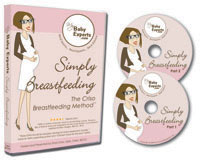 This awesome, full-length breastfeeding class will knock your socks off and you’ll be amazed and empowered with what you learn in the privacy of your home. Round up your husband, future grandparents, and any caregivers of baby; pop some popcorn and enjoy the show.
This awesome, full-length breastfeeding class will knock your socks off and you’ll be amazed and empowered with what you learn in the privacy of your home. Round up your husband, future grandparents, and any caregivers of baby; pop some popcorn and enjoy the show.
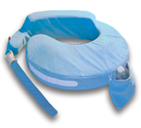 2) My Brest Friend Breastfeeding Pillow. There are lots of supposed breastfeeding pillows on the market, this one is the silver platter for bringing baby up to the boob bar. There is simply no better product on the market to help you get a good latch and get breastfeeding off to a good start; it is used in progressive hospitals and by most lactation counselors and comes in soft cozy colors and prints.
2) My Brest Friend Breastfeeding Pillow. There are lots of supposed breastfeeding pillows on the market, this one is the silver platter for bringing baby up to the boob bar. There is simply no better product on the market to help you get a good latch and get breastfeeding off to a good start; it is used in progressive hospitals and by most lactation counselors and comes in soft cozy colors and prints.
3) Earth Mama Angel Baby Breastfeeding Support Kit. 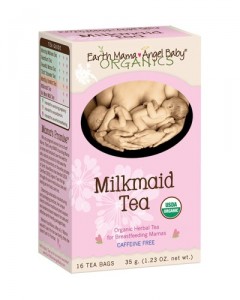 Tender nipples need tender loving care. Spread on some all natural, toxin-free Nipple Butter and breathe a sigh of relief. Booby Tubes are better than gel packs because they can be heated or cooled and don’t leak anything dangerous. Milkmaid Tea boosts production, and Bosom Buddies soothes the swelling.
Tender nipples need tender loving care. Spread on some all natural, toxin-free Nipple Butter and breathe a sigh of relief. Booby Tubes are better than gel packs because they can be heated or cooled and don’t leak anything dangerous. Milkmaid Tea boosts production, and Bosom Buddies soothes the swelling.
4) A Foot Stool. Putting your feet up on a slanted breastfeeding stool will do wonders for your back, belly, boobs and baby. No mom should be without one.
5) A Good Pump: Especially for moms with concerns about low milk production, a good breastpump can be a lifesaver. Our favorites are made by Ameda and Hygeia, and both are BPA free. Hygeia’s breastpump is new on the market, and we love what we see: a closed system means it is reusable, it is recyclable (wow!) and it is promising as being one of the best pumps out there. We have already started to refer to it affectionately as a “lean, green, pumping machine!”
6) Cover Up? For some reason, we’re sure these gals are not too shy, but if modesty is called for, a cute cover-up by Lilabean or Hotslings is just the ticket. Why not suckle in style?
Our last tip? Set small realistic goals-commit to the first 6 to 8 week learning curve, and take it a day at a time or a week at a time in that vulnerable postpartum period. Let your men be your heroes in protecting you and your babies from the booby traps, and let your family and friends bring you food and nurture YOU until breastfeeding is going smoothly. Remember that everything worth having is worth working for, and enjoy this precious time!
To win a Breastfeeding Support Kit, courtesy of our fabulous sponsor Earth Mama Angel Baby, leave a comment saying what you think of this post, why you need a kit, and including the word GIVEAWAY. Winner will be announced.
By Danielle Rigg. Posted on December 31, 2008
Lots of new breastfeeding moms have the burning question . . . can I drink (alcohol) even though I am breastfeeding? Given that it’s New Year’s Eve, we thought it would be a fine time to give you the low-down on booze and boobs.
Here’s the short answer: Yes, absolutely! And moderation is good for your mama mojo.
One of the reasons moms give up breastfeeding is because of the astounding myth that you can’t drink and breastfeed. It’s obvious that this myth was set in motion to convince moms that breastfeeding was restrictive when clearly the opposite is true: once you get the hang of it, breastfeeding is incredibly convenient and unrestrictive! It boggles our minds that this myth really took hold and still lingers, considering that booze and breastfeeding have coexisted over the millenia.
So yes, you can have an occasional glass of wine, or a beer, or even a little nightcap and continue to nurse provided you don’t get drunk. Here’s the shorthand for how to drink alcohol safely while breastfeeding:
- The rule of thumb is that if you feel drunk, your milk will be drunk too. Remember, although some moms may be able to handle 2 ounces of liquor, or 8 ounces of wine, or 2 cans of beer, every one’s tolerance is different. Since most of you haven’t had a drink in about 9 months, you should go slow!
- Ideally, breastfeed shortly before having a drink so you can give your blood alcohol level a chance to come down before nursing again.
- If you get a little carried away, feed your baby some stored breastmilk instead. Your blood alcohol level will be present in your breastmilk, so, if you really overdid it, it might be a good idea to have a stash of frozen pumped breastmilk on hand to feed your baby. If your boobs start to get uncomfortably full, you should pump and dump. Don’t have a stash of frozen breast milk? Here’s some big news: you are still better off nursing your baby! In the Ultimate Breastfeeding Book of Answers, author and famed pediatrician Dr. Jack Newman is unequivocal: “the formula the baby would receive-while the mother is throwing away her milk because it has a tiny amount of alcohol in it-is known to put the baby at greater risk for a host of illnesses and problems.” If you have further questions, talk to your breastfeeding-friendly pediatrician.
- You can resume breastfeeding once you no longer feel drunk; as the alcohol level in your blood decreases, it will decrease in your breastmilk.
The bottomline is that the risks of not breastfeeding are so large, that even if you drink, or smoke, or even get stoned on occasion, you and your baby are still better off breastfeeding. We are not advocating any of those things, we are simply trying to keep you from chucking breastfeeding because you are afraid it will interfere with your lifestyle, or from enjoying a glass of wine. Chronic drinking or smoking or drug use is another matter, and we urge you to get help if that is the case. You owe it to yourself and your baby.
Okay, now on to having some fun! We came across Gabby Reece’s Holiday Partying Tips and think they are awesome. Not only does she give smart advice on how to avoid putting on extra calories, she also makes you feel like she’s your fellow mom-girlfriend who’s got your back. The most important thing, whether you have a drink or not, or whether you go out or not, is to connect with the people you love, get your groove on, and shake your booty!
Happy New Year to you, Babe!
By Bettina. Posted on January 15, 2008
When we tell people we are in the boob business this is what we hear:
1) What’s the big deal? Aren’t most moms breastfeeding?
No. Although 64% of new mothers try breastfeeding, only 14% make it to the minimum six months exclusive breastfeeding recommended by the American Academy of Pediatrics. Worse, most throw in the towel in the first few weeks. Compare that to Sweden’s rates of 99% initiating and 79% nursing at 6 months, respectively, no wonder the U.S. has one of the lowest rates of breastfeeding among all industrialized nations. Thousands of needless deaths, and billions in health care costs in the U.S. could be prevented by raising our national breastfeeding rate.
Especially shocking is that breastfeeding rates actually declined from 70% in 2002 to 63.6% in 2006 following the Government’s $40 million ad campaign highlighting the risks of not breastfeeding. This nearly invisible campaign was botched under powerful lobbying pressure from the formula companies-who increased their own advertising budgets from $30 million to $50 million while the ads ran. To top it off, the government buckled to pressure and held back a press release on a major meta-study underscoring the risks of not breastfeeding (see below)-information that prospective parents DESERVE to have.
2) I wasn’t breastfed and I turned out fine.
Another way of looking at this statement is to compare it to statements like “I didn’t wear a seatbelt when I was a kid and I turned out fine” or “I didn’t wear sunscreen as a kid and I don’t have skin cancer.”
For the first example, seatbelts, we all know by now that seatbelts save lives, mostly because of a brilliant ad campaign that drummed it into our heads, and statistics on crash fatalities involving seatbelts or lack thereof. Luckily for the seatbelt campaign, there were various industries that benefitted from seatbelt laws: automakers that installed them meaning new cars had to be purchased, and law enforcement that could fine if people were not wearing seatbelts! Most importantly, there were no industries that were lobbying against or advertising against wearing seatbelts, as it would be really bad public relations. Not so for breastfeeding. It gets lobbied against and combined marketing budgets total in the billions.
In the second example, skin cancer, it’s somewhat like the first; we know frying in the sun without sunscreen increases the risk of skin cancer, and effective advertising campaigns combined with industries that stand to benefit made for a great combination in educating the public.
But what if you add “yet” to the end of the sunscreen sentence? “I didn’t wear sunscreen, and I don’t have skin cancer, yet”. That’s really what we should hear when someone says “I wasn’t breastfed, and I turned out fine.” You may be fine for now. And we don’t want to scare anyone, but everybody is working really hard to sweep the risks of formula under the rug, and that is not right, or ethical. Parents deserve to know what the risks are, so they can make the best decision for themselves and their families.
So why do so many people seem “fine”? Well, for one thing, most people are not aware of the risks of not breastfeeding, so they are not thinking, I have digestive problems, or allergies, or diabetes, and it could be because I wasn’t breastfed. So when people say, “I turned out fine,” we try not to debate on an individual basis, because every person is different! Some people we know smoked like a chimney their whole lives and never got cancer, but nobody would dream of saying “smoking is fine.”
One thing people might want to consider is that times have changed. Our immune systems need all the help they can get given an increase in environmental stress, overuse of antibiotics, increase in vaccines (and the autoimmune diseases that may be related to that). While the previous generation may have turned out fine not so for this generation, that has drastically increased rates of obesity, diabetes, Crohn’s disease, allergies and autism, to name a few. Our view is that babies nowadays especially need all the help they can get, and that means breastmilk, either from the mother, or screened, pasteurized, donated human milk.
Here is an excellent summary* of the news release that was withheld under the influence of formula lobbyists:
Breastfeeding reduces babies’ risk of these diseases by:
- Sudden Infant Death Syndrome (SIDS): 36%
- Type 1 Diabetes: 19-27%
- Type 2 Diabetes: 39%
- Leukemia (acute lymphocytic) : 19%
- Leukemia (acute myelogenous): 15%
- Asthma: 27%
- Gastrointestinal infections: 64%
- Lower respiratory tract diseases: 72%
- Atopic dermatitis: 42%
- Acute otitis media: 50%
And breastfeeding reduces mothers‘ risk of these diseases by:
- Type 2 Diabetes: 4-12%
- Ovarian cancer: 21%
- Breast cancer: 28%
*(from Motherwear’s breastfeeding blog, “This information comes from a new meta-analysis (study of studies) from the U.S. Department of Health and Human Services. This study looked over 9,000 studies on breastfeeding from developed countries, weeded out the ones with poor methodology, and came up with an overall percentage for each one. This is harder than it sounds because “breastfeeding” is defined differently in each study.”)





 In an exclusive interview,
In an exclusive interview,  and exclusively feed their babies breastmilk. A great resource for these, and all moms, is the book Making More Milk by Diane West, IBCLC and Lisa Marasco, MA, IBCLC. You’ll find lots of information on increasing your milk supply. You’ll be amazed at what your body can do, and what making milk for your precious wee one does for your mama mojo! Check out and websites
and exclusively feed their babies breastmilk. A great resource for these, and all moms, is the book Making More Milk by Diane West, IBCLC and Lisa Marasco, MA, IBCLC. You’ll find lots of information on increasing your milk supply. You’ll be amazed at what your body can do, and what making milk for your precious wee one does for your mama mojo! Check out and websites  This awesome, full-length breastfeeding class will knock your socks off and you’ll be amazed and empowered with what you learn in the privacy of your home. Round up your husband, future grandparents, and any caregivers of baby; pop some popcorn and enjoy the show.
This awesome, full-length breastfeeding class will knock your socks off and you’ll be amazed and empowered with what you learn in the privacy of your home. Round up your husband, future grandparents, and any caregivers of baby; pop some popcorn and enjoy the show. 2)
2)  Tender nipples need tender loving care. Spread on some all natural, toxin-free Nipple Butter and breathe a sigh of relief. Booby Tubes are better than gel packs because they can be heated or cooled and don’t leak anything dangerous. Milkmaid Tea boosts production, and Bosom Buddies soothes the swelling.
Tender nipples need tender loving care. Spread on some all natural, toxin-free Nipple Butter and breathe a sigh of relief. Booby Tubes are better than gel packs because they can be heated or cooled and don’t leak anything dangerous. Milkmaid Tea boosts production, and Bosom Buddies soothes the swelling.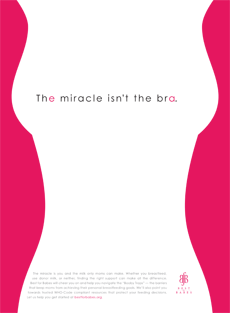
 @BestforBabes
@BestforBabes Best For Babes
Best For Babes


